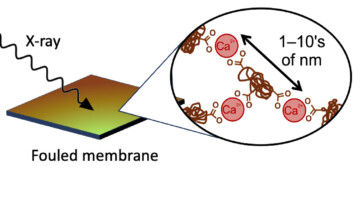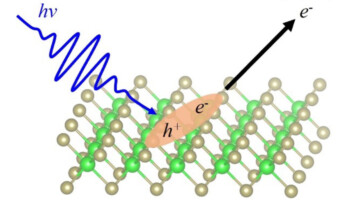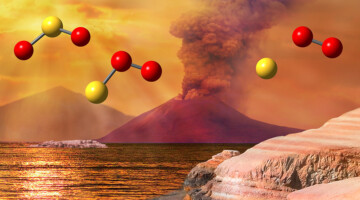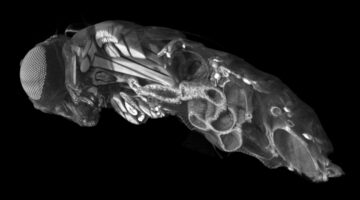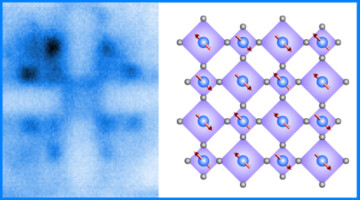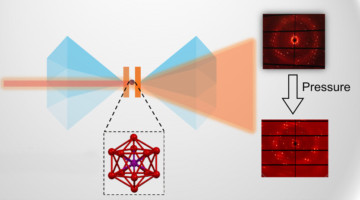When you use a membrane for water treatment, junk builds up on the membrane surface—a process called fouling—which makes the treatment less efficient. In this work, researchers studied how membranes are fouled by interactions between natural organic matter and positively charged ions commonly found in water. Read more »
Science Briefs
Excitons Dance the Two-Step in a 2D Material
Excitonic insulators are a rare form of macroscopic quantum state that can be realized at a high temperature, which can be useful for quantum information science. At the ALS, researchers found that in a 2D material, a novel two-step “folding” behavior in the ARPES data signals the existence of an intermediate exciton gas state. Read more »
New Pathway for SO2 Breakup Sheds Light on Earth’s Oxygenation
While calibrating a new scientific apparatus at the ALS, researchers discovered that ultraviolet light can break up sulfur dioxide (SO2) in a new way, with molecular oxygen (O2) as an unexpected product. The discovery sheds light on Earth’s Great Oxygenation Event 2.4 billion years ago, when atmospheric oxygen levels first began to rise. Read more »
In Fruit-Fly Gut, Bacterial Niche Gets Remodeled for New Arrivals
Researchers found that fruit flies have a specialized niche in their digestive tracts that selects, maintains, and controls bacteria that benefit the fly. Colonization by one type of bacteria physically remodels the niche, promoting secondary colonization by unrelated bacteria. The results will help dissect the mechanisms of host-microbe symbiosis. Read more »
Synergistic Effect Could Boost Production of Green Hydrogen
Researchers developed a composite material of earth-abundant elements that catalyzes the production of green hydrogen much more effectively than similar homogeneous compounds. The composite could potentially be used for efficient hydrogen generation without the need for rare and precious metals like platinum. Read more »
Increasing the Energy Density of Hybrid Supercapacitor Electrodes
Hybrid supercapacitors (HSCs) integrate the merits of batteries with those of supercapacitors. However, the fraction of active material in HSC electrodes has remained too low for commercial requirements. Now, researchers have found a clever way to increase the active-mass ratio to achieve dramatic improvements in key measures. Read more »
Nicotine Protonation in Simulated Vaping Aerosols
To better understand how e-cigarette additives alter nicotine chemistry and users’ perceptions of vaping, researchers used x-ray spectroscopy technology at the Advanced Light Source to analyze the acid-base equilibria of additive-enhanced nicotine in simulated vaping aerosols. Read more »
Extreme Closeup of Copper Electrocatalysts in Action
Researchers at Berkeley Lab have made real-time movies of copper nanoparticles as they evolve to convert carbon dioxide and water into renewable fuels and chemicals. Their new insights could help advance the next generation of solar fuels. Read more »
Doped Nickelate Enters a New Phase with Spintronics Potential
Rare-earth nickelates are known to undergo a metal-to-insulator phase transition as temperature decreases, the mechanism of which is not well understood. Here, researchers observed a new low-temperature phase that’s both metallic and antiferromagnetic—an unusual combination with potential value in spintronics. Read more »
Under Pressure, Gold Nanoclusters Reveal Structure-Property Relationship
Metal nanoclusters have unusual optical properties that are of interest for fundamental reasons as well as for applications like diagnostic imaging and 3D printing. To better understand how nanocluster structure relates to optical properties, researchers performed high-pressure diffraction studies on single crystals of gold nanoclusters. Read more »
- « Previous Page
- 1
- …
- 3
- 4
- 5
- 6
- 7
- …
- 23
- Next Page »
